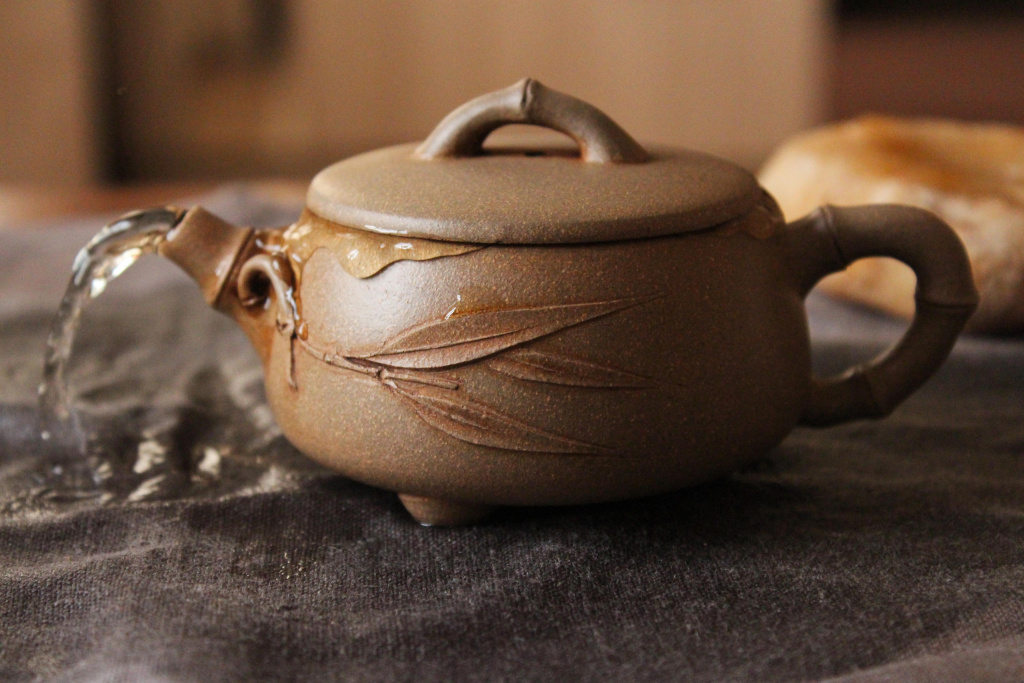Factors Affecting the Taste of Pu'er
Puer is a unique Chinese tea that is distinguished by its depth of taste, complexity of aromas and versatility of aftertaste. Its taste characteristics are formed under the influence of many factors, from growing conditions to the brewing method. Let's look at the main ones.
Raw materials and place of growth
The quality of pu-erh depends largely on where it is grown. Important factors include:- Growing Region: Different regions of Yunnan (e.g. Lincang, Menghai, Xishuangbanna) impart different flavor notes to the tea.
- Age of tea trees: Tea from ancient trees (gu shu) has a more complex taste, rich aroma and a persistent aftertaste.
- Climate and Soil: The altitude, amount of rainfall, temperature changes and soil composition shape the taste of tea.

Storage and aging
Aging Pu'er allows the tea to evolve. Storage factors include:- Temperature and Humidity: Too much humidity can lead to mold, while too much dryness can lead to flavor loss.
- Air Exposure: Pu'er is best stored in controlled air exchange conditions to help it develop a richer flavor.
- Aging Time: Over time, the flavors become deeper, softer, and the aromas more layered.
The influence of utensils on the aroma and consistency of tea
Tea brewing is an art in which various factors can significantly affect its taste and aroma. When a person enjoys a cup of well-made tea, he or she may admire the artistry of the brewing, but in reality the process has its own logic. Experience in brewing comes through study, reflection and practice.In addition to the tea itself, the taste and aroma of the drink are also affected by the teaware and the way the water is poured. The main types of teaware:
- Clay (including Yixing clay)
- Glass
- Porcelain
- Earthenware (such as Yixing) is highly porous and absorbs water, which reduces the concentration of aromatic substances in tea. In addition, tea leaves do not move much during brewing, which makes it difficult to release aroma.
- Porcelain is less porous and retains aroma better, and also maintains a stable temperature, which improves the consistency of the tea.
- Glass practically does not absorb water and has a high thermal conductivity coefficient, which leads to rapid cooling of tea and poor aroma retention.
In terms of tea consistency:
- In glassware , the tea cools quickly, the leaves move actively, but the drink turns out less dense and soft.
- Porcelain promotes a softer and thicker infusion.
- Clay pottery reduces the bitterness of tea and gives it richness by trapping water in the walls.
The influence of the method of pouring water on the quality of tea
The way you pour water is a key factor influencing the taste of tea. It includes:- Pouring speed
- Water flow intensity
- Direction of the jet
- The height from which the water flows
- Thickness of the stream
- Pouring quickly allows for rapid extraction of substances, making the tea stronger and more aromatic, but reducing its softness.
- A slower flow of water results in a softer, denser brew, but reduces the intensity of the aroma.
- A high jet improves the aroma but reduces the softness.
Different ways of directing the stream affect the uniformity of brewing:
- The spiral method promotes uniform extraction.
- The ring method produces a slightly less uniform infusion.
- Spot pouring on one side reduces extraction, and spot pouring from the center creates the least uniform infusion.
- Комментарии
- Вконтакте
Загрузка комментариев...









